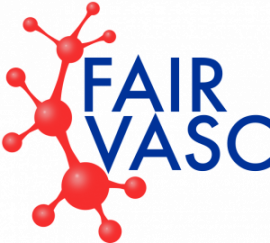
1. What was your motivation to create Fairvasc?
The challenge that we face is that vasculitis is a rare disease, so it is really not possible to accumulate sufficient numbers of patients to study from regional or national data sources such as registries. On the other hand, creation of a central registry across Europe is extremely complex and often financially unattainable. There are also very significant data protection challenges in the creation of such a central hub so we decided to take a different view on this, one which is aligned with the direction of travel of the European Joint Program: creation of a semantic web interface that would allow a researcher or policy-maker to query across multiple european registries at once.
2. What tools does the Fairvasc project provide members of the consortium with?
The beauty of this semantic web approach is that the seven registries underpinning the FAIRVASC project are all uplifted into a common data source, into a common ontology which makes sure that they are all interoperable. That means that we use the same terms for describing features associated with the disease- ANCA vasculitis in each of the registries, no matter which country they come from. This uses a data modeling technology called RDFand effectively renders the registries that are connected to this interface machine-readable and queryable through this single point.
The other important aspect is that the data queried on each registry is aggregated at source. Therefore, the only data leaving the registry site is aggregated and therefore does not come under the jurisdiction of the GDPR. This makes data protection issues very much simpler. more complex analysis, such as regression or time series analyses, we are exploring with Professor Louis Aslett from Durham University the possibilities of advanced privacy preserving techniques such as homomorphic encryption. By adopting this approach, we aim to have access using a single interface to around 7000 patients with ANCA vasculitis in the first FAIRVASC release. This allows us to really start to answer important questions relating to this disease, such as the factors that lead to a poor outcome and the effect of various treatments, such as new treatments like the C5a receptor blocker, avacopan.
3. Are you planning to expand the project and what are the main future goals for Fairvasc?
The other great advantage of this approach is that this is effectively a plug-and-play technology. If a new registry is interested in joining the FAIRVASC project there is a series of tasks at the beginning to map their dataset onto this common ontology and expose this through an RDF Triplestore to the Fairvasc interface. Once that is achieved this registry gets added to the overall pool. To assist this process we have introduced a “model registry” based on the open-source software REDCap through the Euvas Registries Group. This effectively creates a ready-made database for implementation locally and, importantly, uses the same dataset across the all registries. This will make the mapping and interoperability very much more straightforward.
There are currently about 10 registries engaging in this process that we hope to plug into the FAIRVASC interface in due course. The project runs until around the middle of 2023 so it is very important that we consider the sustainability of the infrastructure beyond this date. Therefore, we are very much aligned with the EUVAS registries group which is key to establishing processes and safe mechanisms for interaction with industry. Finally, and probably most importantly, we are ensuring that we develop the FAIRVASC software in alignment with the European Joint Program for Rare Diseases so that, when we complete this project, we become one of the stable of EJP projects and therefore mainstream into the long-term objectives of the European Commission for handling data from patients with rare diseases.
